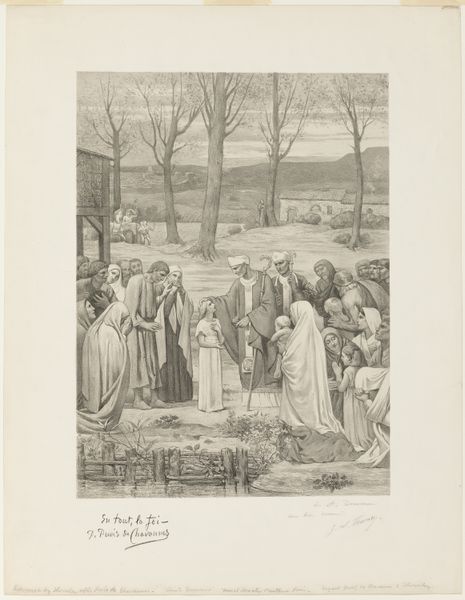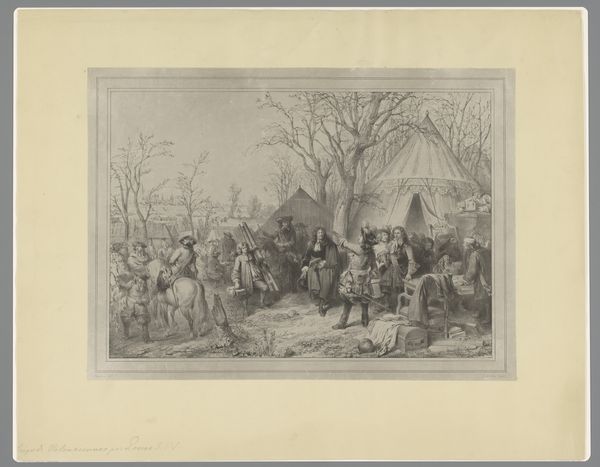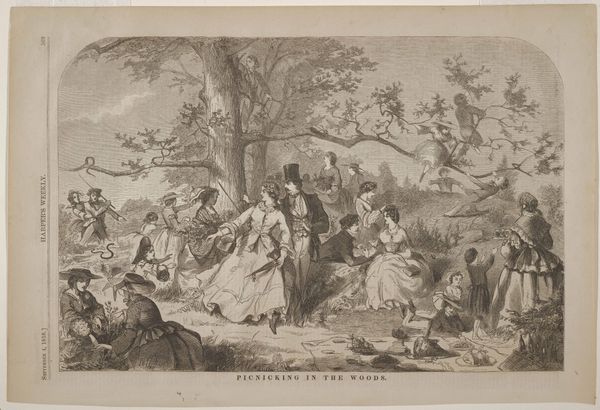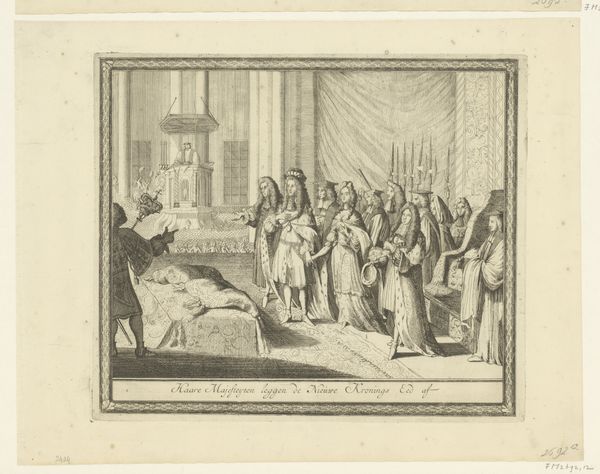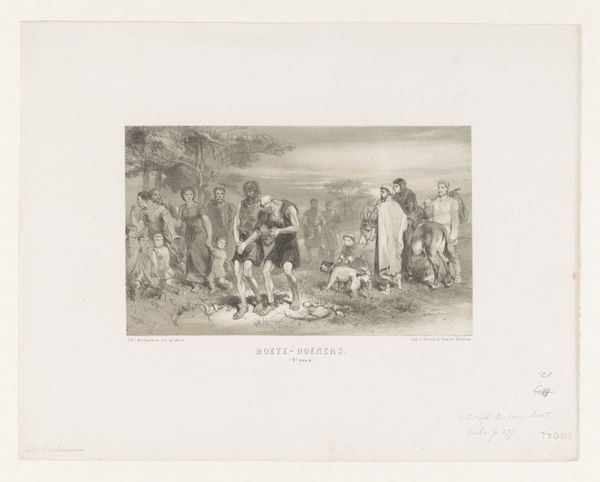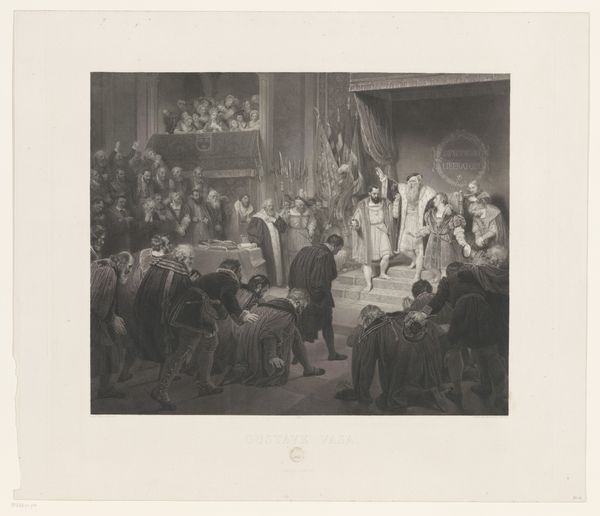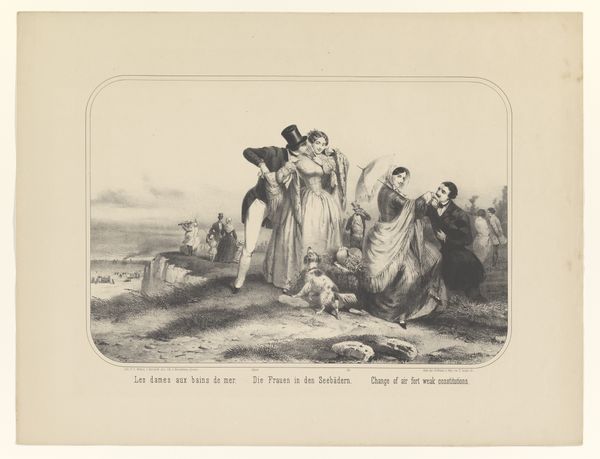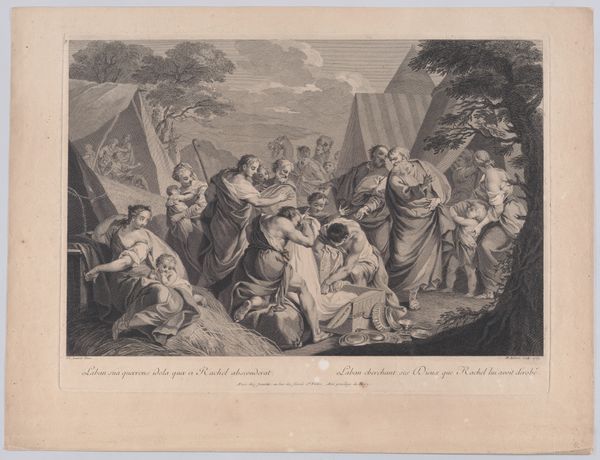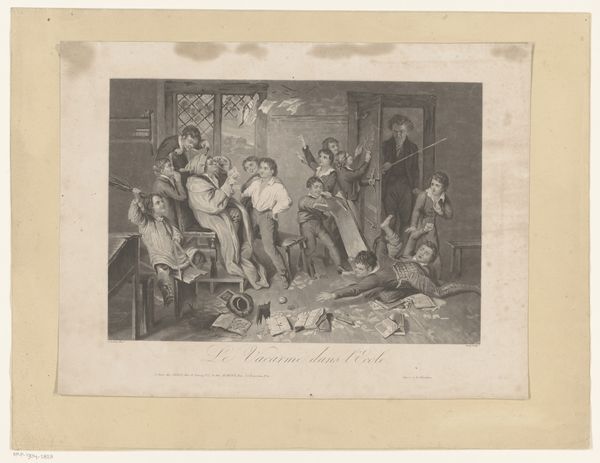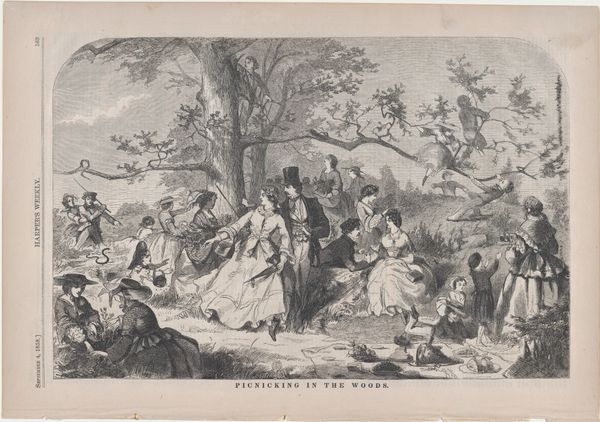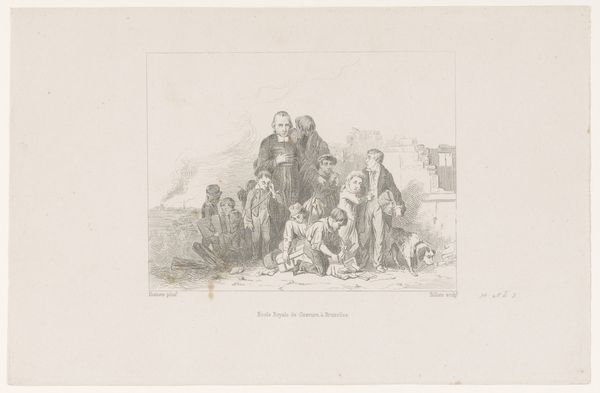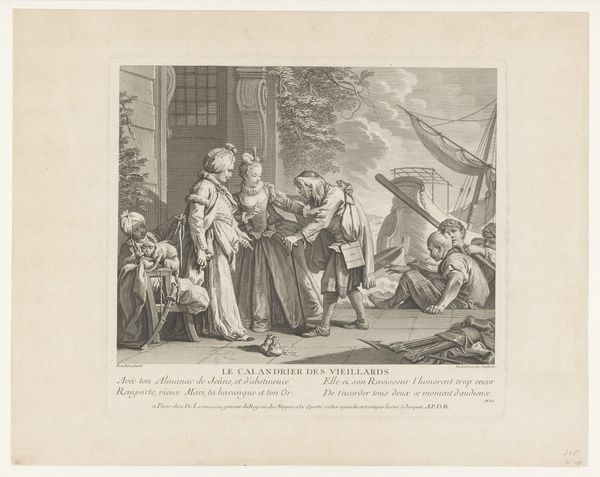
drawing, pencil
#
pencil drawn
#
drawing
#
pencil sketch
#
landscape
#
pencil
#
genre-painting
#
history-painting
#
street
#
realism
Dimensions: height 257 mm, width 310 mm
Copyright: Rijks Museum: Open Domain
Curator: Blanchard, Auguste Thomas Marie, a realist, who created, among others, the artwork now in front of us. This drawing rendered in pencil sketch on paper is titled "Lodewijk XVI op bezoek in een arme wijk," which translates to "Louis XVI Visiting a Poor Neighborhood," dating between 1829 and 1898. What do you think? Editor: Dreary. I'm immediately struck by the composition's cold palette and the stoicism etched on these figures’ faces. Despite the suggested charitable theme, there is very little warmth on display. Curator: Indeed, the scene depicts the French monarch distributing alms, attempting perhaps, a kind gesture towards impoverished citizens. But in viewing it, I question what is captured and ask myself what is beyond what meets the eye? Did this help in some meaningful way or was this a purely superficial act to be captured? Editor: Blanchard’s approach seems almost photographic in its stark depiction of light and shadow, focusing meticulously on texture and form rather than any dramatized emotion. Notice how each figure, though part of a larger group, maintains their spatial independence, reinforcing a sense of societal disconnect. Curator: Exactly, there is a starkness present—the somber atmosphere, rendered meticulously through delicate pencil work. Look how he captures the texture of worn fabrics and rough wood, the implication of tangible hardship? How the figures seem arranged but hardly interconnected…It whispers more than it shouts! Editor: Semiotically, the act of giving becomes a complex symbol. The king's fine garments, contrasted with the tattered clothes of the recipients, emphasizes hierarchy. Yet, it feels staged—less a genuine encounter and more an illustration of social disparity frozen in time. Curator: So it speaks to the timeless chasm between privilege and destitution... Do we romanticize, or is there truth within a sketch like this that whispers quietly about society even today? It is history sketched in shades of gray—open to interpretation, open to endless wondering about its purpose and enduring resonance. Editor: Perhaps it is the power of form to expose social fault lines—a silent dialogue etched in pencil strokes for generations to dissect. That’s its impact.
Comments
No comments
Be the first to comment and join the conversation on the ultimate creative platform.
